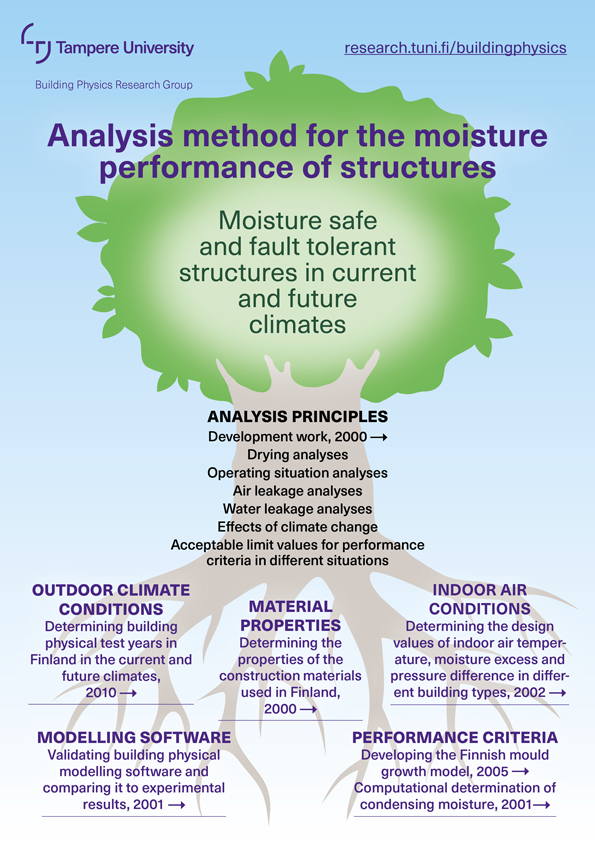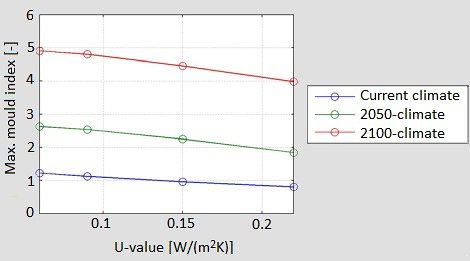
In the analysis method for moisture performance developed by the building physics research group of Tampere University of Technology the hygrothermal behaviour of structures is examined through calculations in critical indoor and outdoor air conditions. The method has been developed for more than ten years in different projects funded by the National Technology Agency of Finland (TEKES). At the moment the method is one of the most advanced in the world for analysing moisture performance.
Development process:
- Development of analysing principles, Tampere University/TUT 2000–
- Determination of Finnish building material properties, Tampere University/TUT 2000–
- Improvement of computational simulation methods, Tampere University/TUT 2001–
- Determination of indoor air design conditions, TUT and Aalto University 2002–2008, TUT 2009–2012
- Determining performance criteria and limit values Tampere University/TUT 2005- (Finnish mould growth model, VTT 1986–2004, TUT and VTT 2005–2013)
- Determination of building physical test years in Finnish climate, TUT and Finnish Meteorological Institute 2010–2012

Many factors influence the reliability of building physical design analysis. One must be acquainted with the physics of heat and moisture, performance criteria of structures, failure methods, the building physical properties of construction materials as well as the climate stresses of outdoor and indoor air on the structures and their combinations in extreme conditions, so that the performance of the structure can be assessed adequately. The most essential novelty factors of this method are the manner in which the test years were determined, the determining of the future test years, the more accurate values of moisture supply for indoor air as a function of outdoor temperature, using the Finnish mould growth model for assessing the mould risk of structures, and the developed criteria for evaluation and results.
Properties of the analysis method:
- The outdoor climate data is based on test years (Vantaa 2007 and Jokioinen 2004), which are critical in regards to the hygrothermal behaviour of structures. All key circumstantial factors have been taken into account in choosing the test years. These test years are based on actual realized years. (More about test years: Climatological test years in Finland)
- In addition to the present day, the test years were also determined for years 2030, 2050 and 2100. These test years are based on the emissions scenario A2 of the SRES-scenarios by the Finnish Meteorological Institute.
- The method is suitable for studying different envelope assemblies. The test year is chosen based on the structure under consideration.
- The Finnish mould growth model is used to assess the mould risk of structures. The model can be used to estimate the amount of mould at a certain point.
- Indoor air design conditions are based on actual measured values from Finnish residential buildings.
- The building physical properties of construction materials used were mainly those of materials used in Finland.
The analysis method for moisture performance of structures can be utilized in many different ways when designing moisture safe structures, in drying time analyses and when determining adequate hygrothermal reliability. Companies can use the method in product development by confirming the hygrothermal behaviour of their structural concepts in advance in both present and future climates. Additionally, in new and renovation cases the hygrothermal behaviour of different solutions can be compared.
Additional reading: FRAME-project.
